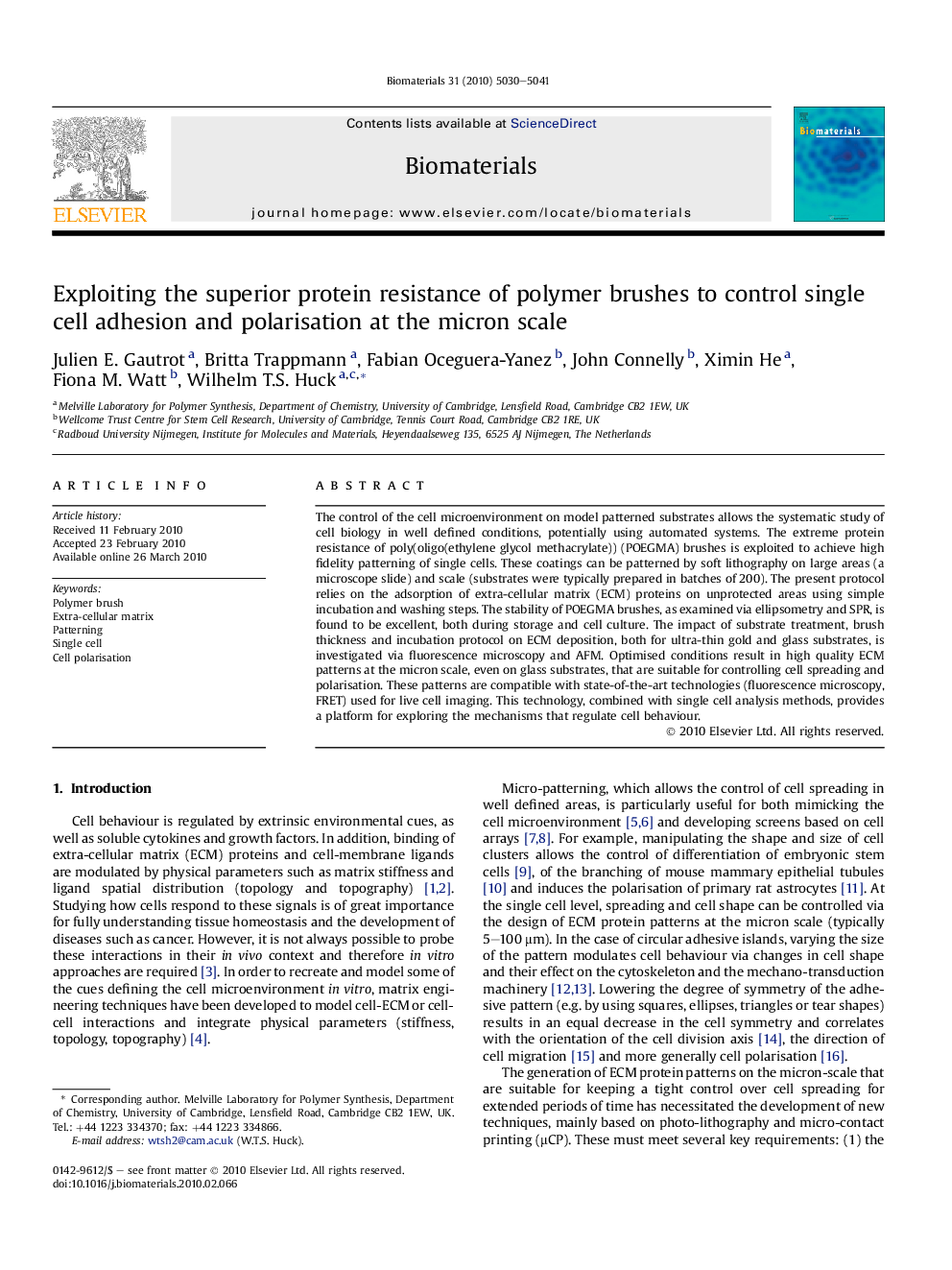| Article ID | Journal | Published Year | Pages | File Type |
|---|---|---|---|---|
| 10229925 | Biomaterials | 2010 | 12 Pages |
Abstract
The control of the cell microenvironment on model patterned substrates allows the systematic study of cell biology in well defined conditions, potentially using automated systems. The extreme protein resistance of poly(oligo(ethylene glycol methacrylate)) (POEGMA) brushes is exploited to achieve high fidelity patterning of single cells. These coatings can be patterned by soft lithography on large areas (a microscope slide) and scale (substrates were typically prepared in batches of 200). The present protocol relies on the adsorption of extra-cellular matrix (ECM) proteins on unprotected areas using simple incubation and washing steps. The stability of POEGMA brushes, as examined via ellipsometry and SPR, is found to be excellent, both during storage and cell culture. The impact of substrate treatment, brush thickness and incubation protocol on ECM deposition, both for ultra-thin gold and glass substrates, is investigated via fluorescence microscopy and AFM. Optimised conditions result in high quality ECM patterns at the micron scale, even on glass substrates, that are suitable for controlling cell spreading and polarisation. These patterns are compatible with state-of-the-art technologies (fluorescence microscopy, FRET) used for live cell imaging. This technology, combined with single cell analysis methods, provides a platform for exploring the mechanisms that regulate cell behaviour.
Related Topics
Physical Sciences and Engineering
Chemical Engineering
Bioengineering
Authors
Julien E. Gautrot, Britta Trappmann, Fabian Oceguera-Yanez, John Connelly, Ximin He, Fiona M. Watt, Wilhelm T.S. Huck,
